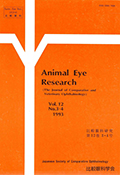Volume 12, Issue 3-4
Displaying 1-11 of 11 articles from this issue
- |<
- <
- 1
- >
- >|
Prof. Gelatt's Special Lecture Series in Japan
-
1993Volume 12Issue 3-4 Pages 3-4_1-3-4_14
Published: 1993
Released on J-STAGE: December 25, 2020
Download PDF (4788K)
The 12th Annual Meeting of The Society
Workshop
-
1993Volume 12Issue 3-4 Pages 3-4_15-3-4_16
Published: 1993
Released on J-STAGE: December 25, 2020
Download PDF (483K) -
1993Volume 12Issue 3-4 Pages 3-4_17-3-4_21
Published: 1993
Released on J-STAGE: December 25, 2020
Download PDF (1506K) -
1993Volume 12Issue 3-4 Pages 3-4_23-3-4_26
Published: 1993
Released on J-STAGE: December 25, 2020
Download PDF (1109K) -
1993Volume 12Issue 3-4 Pages 3-4_27-3-4_34
Published: 1993
Released on J-STAGE: December 25, 2020
Download PDF (2497K) -
1993Volume 12Issue 3-4 Pages 3-4_35-3-4_40
Published: 1993
Released on J-STAGE: December 25, 2020
Download PDF (1702K) -
1993Volume 12Issue 3-4 Pages 3-4_41-3-4_46
Published: 1993
Released on J-STAGE: December 25, 2020
Download PDF (1485K) -
1993Volume 12Issue 3-4 Pages 3-4_47-3-4_53
Published: 1993
Released on J-STAGE: December 25, 2020
Download PDF (2392K) -
1993Volume 12Issue 3-4 Pages 3-4_55-3-4_60
Published: 1993
Released on J-STAGE: December 25, 2020
Download PDF (1865K)
Original Brief Note
-
1993Volume 12Issue 3-4 Pages 3-4_61-3-4_65
Published: 1993
Released on J-STAGE: December 25, 2020
Download PDF (1399K)
Information and Data
-
1993Volume 12Issue 3-4 Pages 3-4_67-3-4_88
Published: 1993
Released on J-STAGE: December 25, 2020
Download PDF (6932K)
- |<
- <
- 1
- >
- >|
